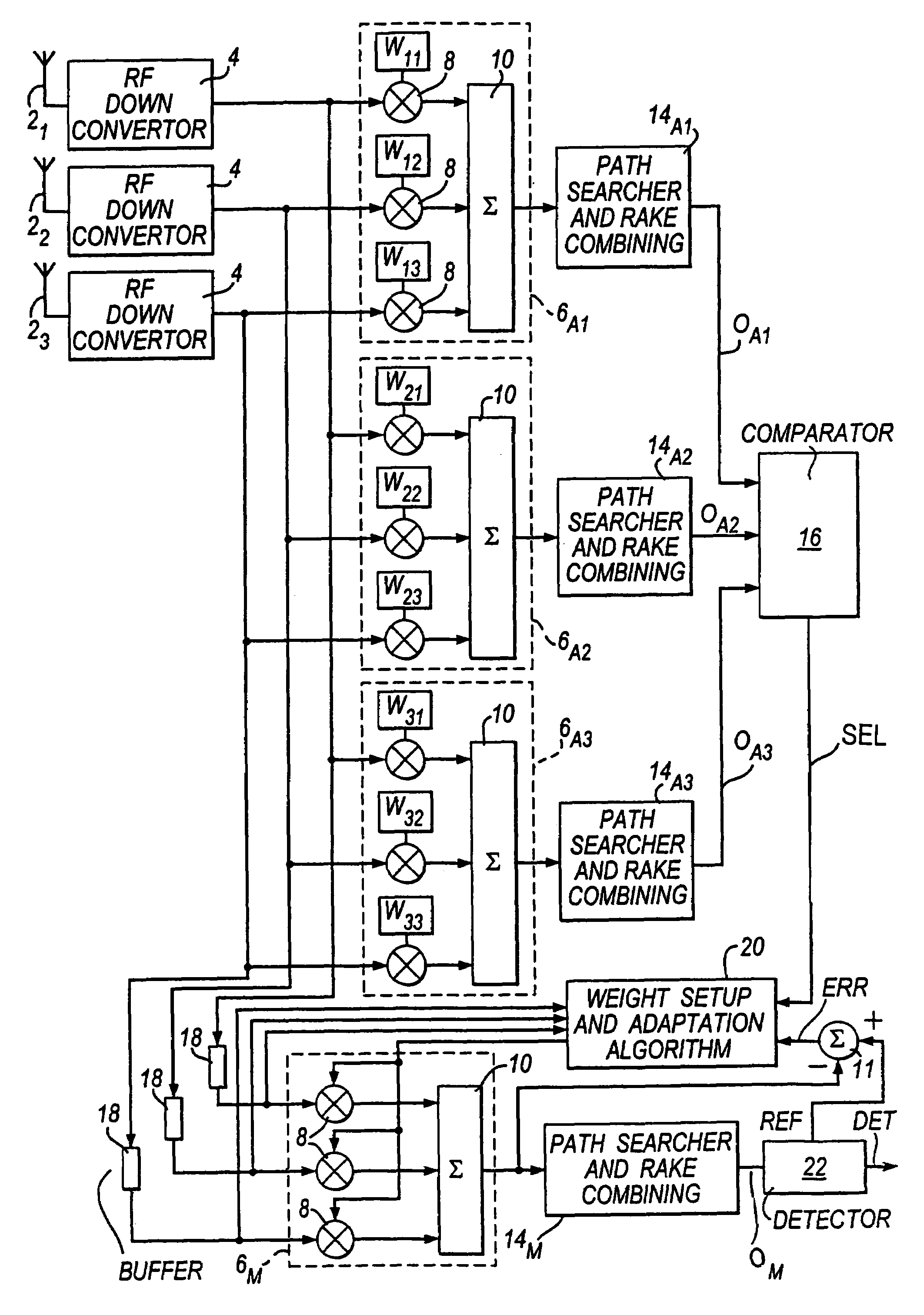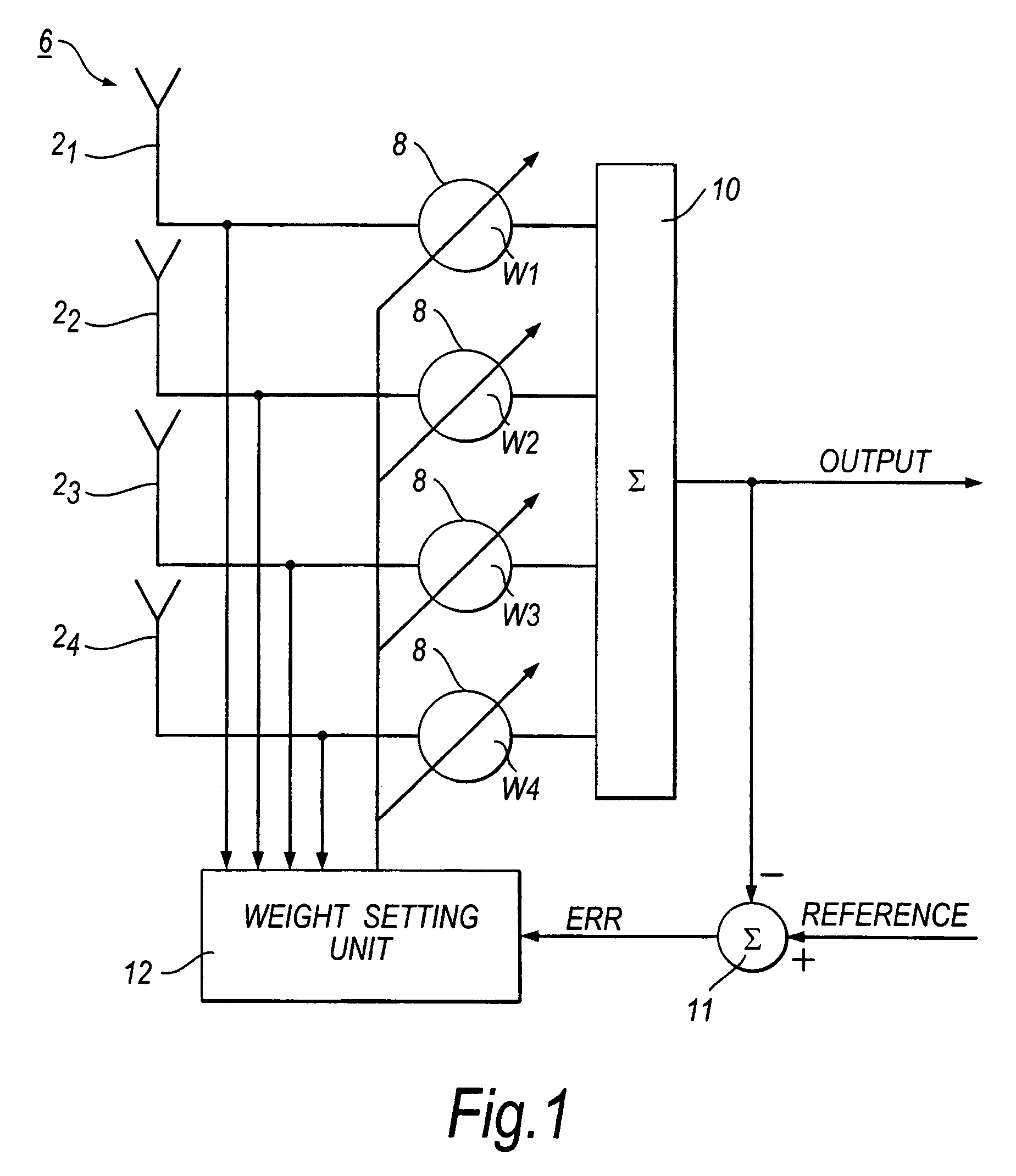Receiving apparatus including adaptive beamformers
a beamformer and receiver technology, applied in the direction of polarisation/directional diversity, instruments, and reradiation, etc., can solve the problems of long delay, high level of mui, waste of bandwidth, etc., and achieve the effect of cost saving
- Summary
- Abstract
- Description
- Claims
- Application Information
AI Technical Summary
Benefits of technology
Problems solved by technology
Method used
Image
Examples
first embodiment
[0028]FIG. 2 shows parts of receiving apparatus according to the present invention. This embodiment is intended for use in a cellular mobile communications system which combines pilot-symbol-assisted modulation (PSAM) with direct-sequence code-division-multiple-access (DS-CDMA). This DS-CDMA PSAM system may, for example, have the following specification:[0029]Modulation method—quadrature phase shift keying (QPSK), pilot-symbol-assisted coherent detection;[0030]Chip rate=4.096 Mchips / s;[0031]Symbol rate=32 kbits / s.
[0032]In such a CDMA system, a pseudo-noise (PN) spreading code is used to spread the transmission signal at the mobile station. This spreading code is known to the receiving apparatus, enabling it to decode (or despread) the spread transmission signal received from the mobile station. Further information on spreading and despreading in DS-CDMA systems can be found, for example, in “CDMA—principles of spread spectrum communications”, Andrew J Viterbi, Addison-Wesley Publish...
third embodiment
[0099]Operation of the third embodiment will now be described with reference to FIG. 8. Initially, each of the switches 34 is configured to select its A1 input and the selection switch 30 is configured to the position shown in FIG. 7 itself which it connects the output of the path searcher and RAKE combiner portion 14 to the input of the control unit 36.
[0100]The sequence of operations is commenced (time A in FIG. 8) when the first pilot-symbol of a batch PS of pilot symbols in the current timeslot at the A1 input of each switch element appears. At this point, the control unit 36 causes the weight settings for the first assistant beamformer to be loaded into the complex number multipliers 8 of the digital beamformer 6. The output signal OA1 of the path searcher and RAKE combiner portion 14 over the period occupied by the batch of pilot symbols is then stored in the control unit 36.
[0101]At the end of the batch PS of pilot symbols (time B in FIG. 8) the control unit 36 loads the weig...
PUM
 Login to View More
Login to View More Abstract
Description
Claims
Application Information
 Login to View More
Login to View More - R&D
- Intellectual Property
- Life Sciences
- Materials
- Tech Scout
- Unparalleled Data Quality
- Higher Quality Content
- 60% Fewer Hallucinations
Browse by: Latest US Patents, China's latest patents, Technical Efficacy Thesaurus, Application Domain, Technology Topic, Popular Technical Reports.
© 2025 PatSnap. All rights reserved.Legal|Privacy policy|Modern Slavery Act Transparency Statement|Sitemap|About US| Contact US: help@patsnap.com



